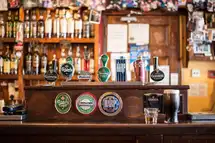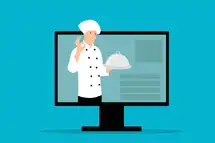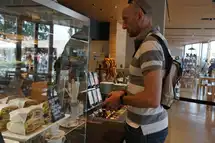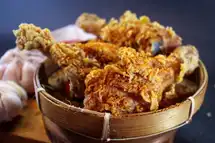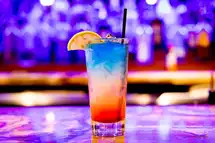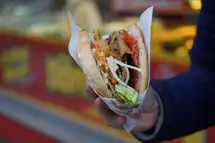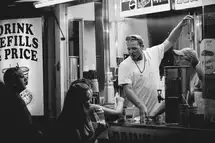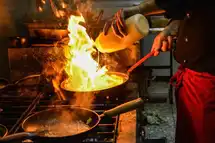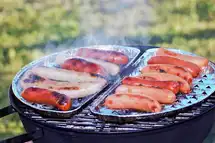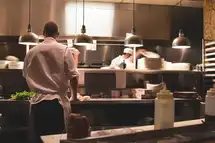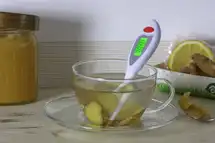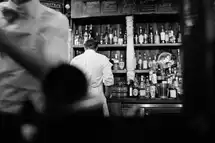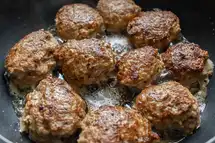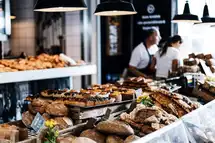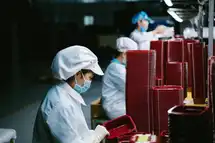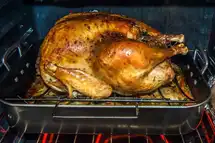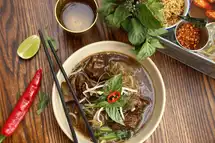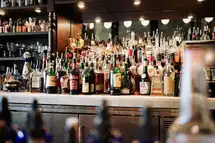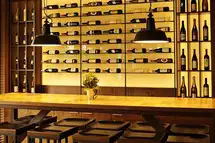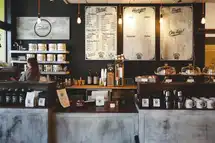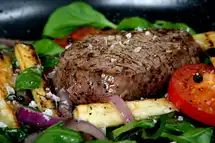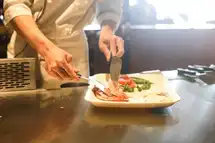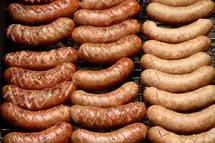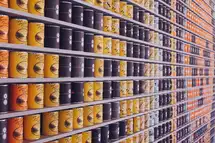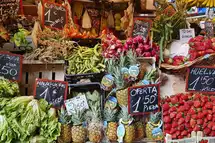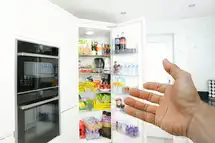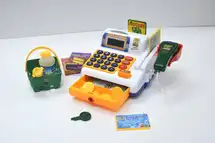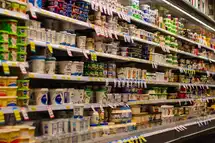What are food safety rules?
1. Wash your hands thoroughly with soap and water before handling food. 2. Keep food preparation surfaces clean and sanitized. 3. Cook food thoroughly to kill any harmful bacteria that may be present. 4. Avoid cross-contamination by keeping raw and cooked foods separate. 5. Store food properly to prevent bacterial growth. 6. Check the expiration date on food before eating it. 7. When in doubt, throw it out! If you're not sure if a food is safe to eat, it's better to err on the side of caution and discard it.
10 Food Safety Rules Every Ghost Kitchen Operator Should Practice
What is a Ghost Kitchen?
Ever wondered why you don't get to see the brick-and-mortar restaurant of your favorite new Asian joint, or the new bakery that delivers to your doorstep but never shows up on a map? It's because they're ghost kitchens or dark kitchens.
Ghost kitchens operate without an actual storefront and use third-party food delivery services such as UberEats or DoorDash for their operations. With the Covid-19 pandemic having brought the shutters down on the dine-in format, ghost kitchens have cropped up as the new alternative. What's making them even more popular is the fact that, having tasted the convenience of online ordering during the pandemic, consumers continue to want to order in. Could ghost kitchens do away with the concept of dine-in services altogether? That, thankfully, seems very unlikely.
So how does a ghost kitchen work? A ghost kitchen typically leases an established commercial kitchen with no dine-in facility. These kitchens cater to consumers directly and even serve restaurants, using third party delivery apps or even their own food delivery chains to get the food across.
Ghost kitchens are becoming increasingly popular as the food delivery market continues to grow. They offer many advantages for both, restaurants and consumers alike. For restaurants, they provide a cost-effective way to enter the delivery market without incurring the high costs associated with opening up a brick-and-mortar space. As for consumers, they provide them with the convenience of ordering from the comfort of their own homes!
Common Food Safety Violations in a Ghost Kitchen
According to the Centers for Disease Control and Prevention (CDC), the United States reports over 3,000 deaths every year due to foodborne illnesses and food poisoning. What's more, over 48 million people fall ill due to foodborne illnesses on an annual basis in the United States. This is why food safety remains a major public health concern here. And like most kitchens handling food, ghost kitchens too have to battle food safety concerns related to food handling, cooking, and cross contamination. Let us now look at some of the most common food safety violations observed in a ghost kitchen-
1. Cooked food, when left at room temperature, is at risk of rapidly developing bacterial growth. The temperature range of 40-140 F (called the danger zone) is the range in which cooked and perishable food products, such as milk and other dairy products, develop bacteria that multiply at twice the speed at temperatures outside the danger zone. It is therefore critically important to refrigerate food within two hours of cooking, in order to avoid this.
2. Kitchen equipment such as knives, cutting boards, and utensils, when used interchangeably to cut and cook raw meat, poultry seafood items, and fruits and vegetables, can lead to cross contamination. Cutting boards and other equipment must never be used for different food products, and be reserved for one type of food only.
3. If food products are not stored at the correct temperature, they are ripe for bacterial grow. This can cause food poisoning and foodborne illnesses. Cold foods must be stored in the refrigerator at the correct temperature, while hot foods must be also stored at appropriate temperatures in order to avoid bacterial growth.
4. It is also absolutely essential to keep raw food and cooked food separately in the kitchen, refrigerator or during different food handling processes. If not kept separate, raw food items such as raw meat may cause cross contamination and affect cooked foods.
5. Improper hygiene and poor kitchen sanitation can also often lead to virus and bacterial spread. This includes improper washing of hands, refusal to wear gloves for food handling, and leaving kitchen surfaces filthy.
With more ghost kitchens popping up, there is more responsibility for operators to ensure safety standards are met.
There’s a higher risk for food safety issues if proper protocols are not followed.
What Can Happen if Food Safety Rules Are Not Observed?
The consequences of not following food safety rules can be serious. Foodborne illnesses can make people very sick, and in some cases, they can even be fatal. Every year, there are hundreds of outbreaks of foodborne illness and other public health concerns in the United States alone, and many of these outbreaks are linked to restaurants or other commercial food operations.
There are a number of specific dangers that can occur when food safety rules are not followed. For example, if raw meat is not cooked properly, it can harbor dangerous bacteria like salmonella or E. coli. If raw eggs are used in foods like Caesar salads or Hollandaise sauce, there is a risk of contracting salmonella poisoning. And if sushi or other raw fish dishes are not prepared correctly, they can spread harmful parasites that can cause serious foodborne illnesses.
It is always best to err on the side of caution when it comes to food safety. This means cooking meat thoroughly, ensuring the right internal temperature are met when cooking, avoiding cross-contamination between raw and cooked foods, washing hands and surfaces often, and being careful about which foods can be consumed raw. By following these simple guidelines, you can help to protect yourself and others from potentially deadly foodborne illnesses.
10 Food Safety Rules for Ghost Kitchens

If you're thinking about opening a ghost kitchen, there are some important food safety rules you'll need to follow. Here are 10 of the most important ones-
1. Keep Food products that are cooked and raw separate. This means keeping raw meat, poultry, and seafood away from all other foods, including fruits and vegetables, as well as cooked foods.
2. Wash your hands thoroughly and frequently in between different cooking and food handling processes. You should wash your hands for at least 20 seconds with hot, soapy water before handling any food and after using the restroom, handling garbage, or touching anything else that could be contaminated (like pets).
3. Clean surfaces often. All surfaces in your ghost kitchen such as cooking equipment, cutting boards, countertops, floors, etc. should be cleaned regularly with hot water and soap.
4. Sanitize all surfaces daily. In addition to cleaning them regularly, all surfaces in your ghost kitchen should be sanitized daily with a bleach solution (1 tablespoon of bleach per gallon of water).
5. Keep food at the right storage temperature. Raw meat, poultry seafood, eggs, and dairy should be kept refrigerated until they are ready to be cooked or served (at 40 F or below). Cooked foods should also be kept at a safe temperature (140 F or above) until they're ready to eat. Avoid the food temperature Danger Zone at all costs.
6. Use food labels to mark specifications for food products that are perishable, or do not have their original packaging. This avoids confusion and improper use in the kitchen. Food labels should also mention shelf-life to prevent food poisoning.
7. Train your kitchen staff to use food gloves at all times for all food handling processes as they reduce the risk of contamination and the spread of foodborne illnesses significantly.
8. Wash all your fruits and vegetables thoroughly before use, as these often contain harmful parasites. even if you are peeling your vegetables, wash them first.
9. Use food thermometers to make sure you reach the right internal temperature while cooking a dish, especially poultry seafood, and raw meat products.
10. Train your entire kitchen staff to abide by these food safety practices as they are the ones handling the food.
The Importance of a Food Safety Management Program
As the owner or manager of a food service business, you have to make sure you don't risk public health. A food safety management program is an essential part of this responsibility. A food safety management program is a set of procedures and practices designed to prevent foodborne illness. It should include policies and procedures for food handling and storage, food preparation, and cleaning of equipment. It should also address employee hygiene and health, as well as consumer education.
An effective food safety management program can help you avoid costly recalls, lawsuits, and closures. It can also help build consumer confidence in your products and brand. Implementing a food safety management program is an investment in the future of your business.
Outbreaks of food-borne illnesses can be costly and damaging to a business’s reputation.
Implement these best practices in restaurant food safety to keep your customers safe and your business protected.
Top 3 Food Safety Management Apps
1. Zip HACCP
Zip HACCP is a Hazard Analysis Critical Control Point (HACCP) food safety management system. It helps restaurants and ghost kitchens ensure that they follow food safety processes diligently and take corrective action when violations occur. HACCP is a food safety management system designed by the Food and Drugs Administration (FDA) to help businesses analyze their food handling processes down to the tiniest detail, monitor them, and take measures to prevent misuse or oversight. Zip HACCP also helps businesses stay compliant with local food safety regulations.
2. Safefood 360
Safefood 360 is an integrated food safety management system that gives restaurant operators full control over food safety, quality control and compliance issues. Safefood 360 offers over 35 preset modules that can be activated for different food safety concerns. Businesses can calibrate the software according to their local food safety regulations, ensuring compliance. From HACCP plans to in-depth monitoring procedures, food safety auditing and real-time reporting, Safefood 360 promises all-round coverage for restaurants and ghost kitchens.
3. FoodLogicQ
The FoodLogicQ software provides food safety management and monitoring tools that use visual dashboards to give restaurant and kitchen operators full control over their food handling processes. You can use these dashboards to track all food safety measures undertaken at your business, along with steps being taken by your vendors and suppliers. As a restaurant operator, you can also use this food safety management software to monitor your employees' activities regarding best practices and compliance.
Food Safety- Final Word
As a general rule, you should avoid serving and eating raw meat or undercooked poultry, fish, and eggs. These foods can contain harmful bacteria that can cause food poisoning. To reduce the risk of spreading diseases, make sure to cook these foods until they reach an internal temperature that is hot enough to kill any bacteria that may be present in them.
In addition to cooking these foods properly, you should also take care to avoid cross contamination in your kitchen. This means keeping raw and cooked food separate, as well as washing your hands thoroughly after handling raw meat. By following these simple food safety tips, you can help keep yourself and your customers safe from foodborne illnesses.
A food-borne illness outbreak can be devastating.
Food-borne illnesses are on the rise. They’re often caused by poor hygiene and lack of knowledge.


